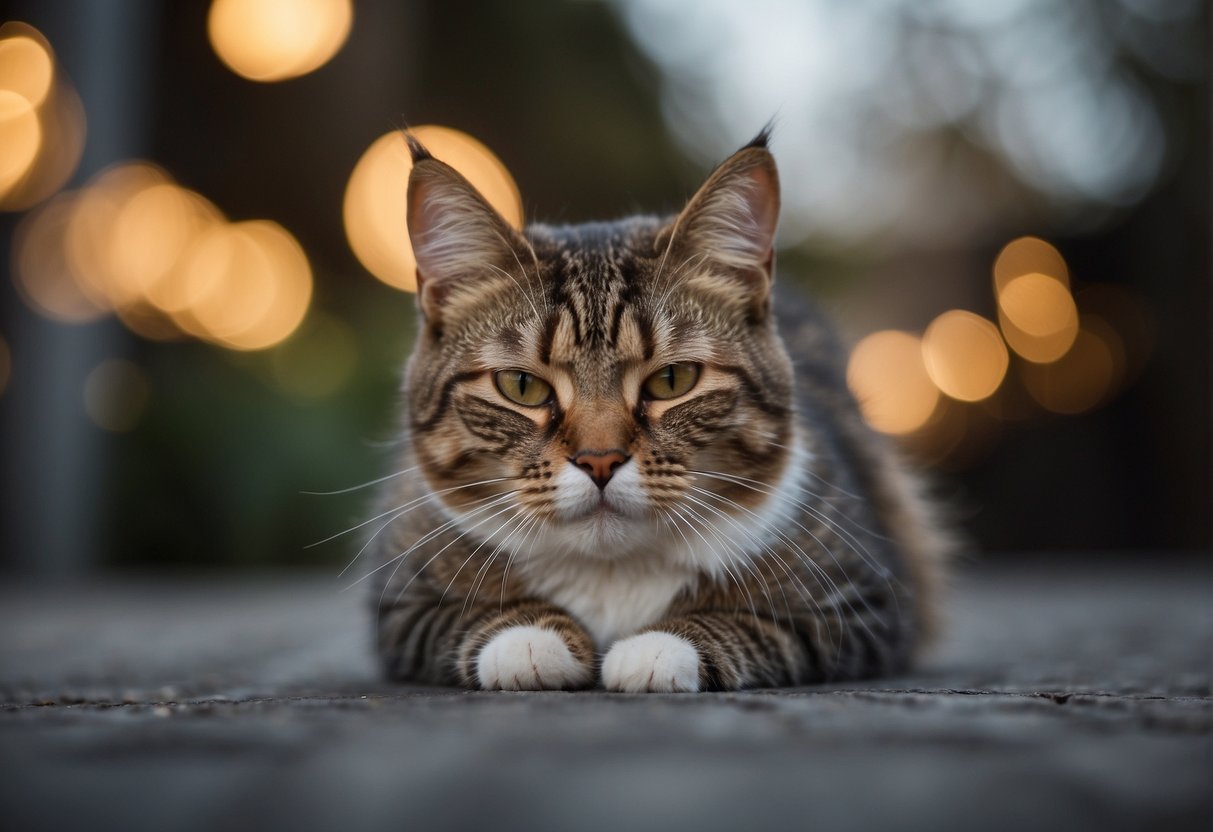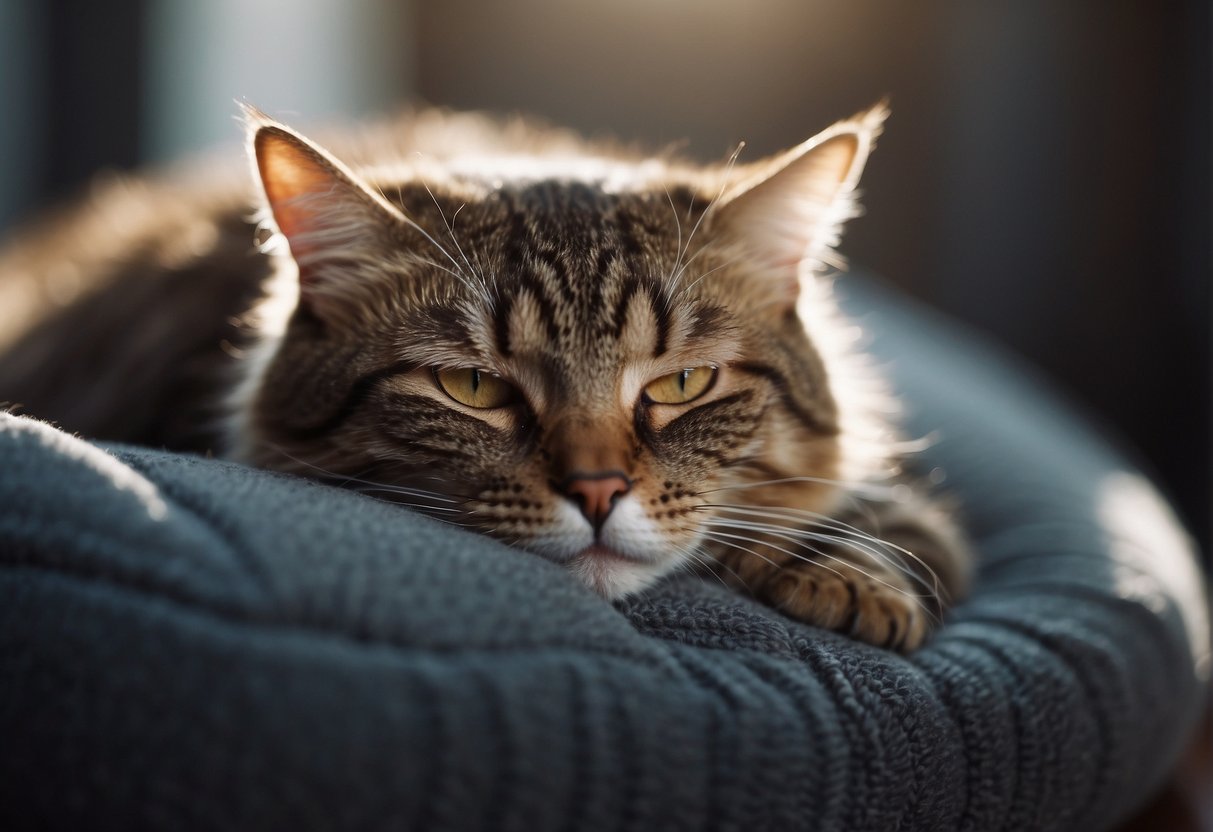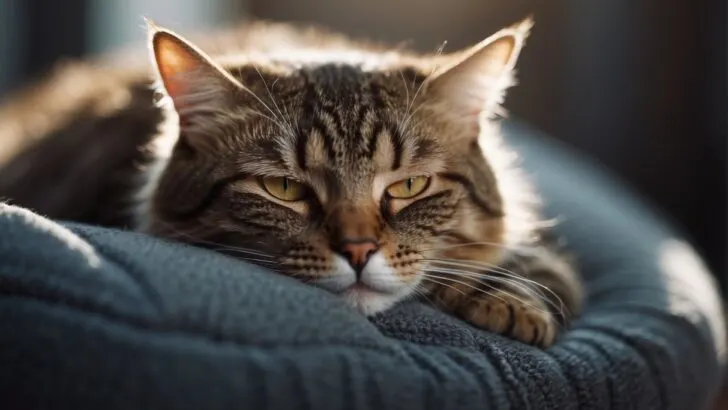Cats are known for their mysterious behaviors and peculiar sleeping habits, but sleepwalking is not one of their known activities.
Cats do experience various sleep phases, including a deep sleep state and a lighter sleep, similar to our REM sleep, where they may twitch or move their paws as if dreaming of chasing mice.
While it might look like they’re sleepwalking, they’re most likely just reacting to a dream.

My cat like most others spends a significant portion of the day snoozing, and these various stages of sleep are essential for his well-being.
You might have observed your cat seeming to act out their dreams, perhaps pursuing imaginary prey or subtly pouncing while otherwise at rest.
This is because, during their restful periods, cats can exhibit movements that might lead you to believe they’re sleepwalking.
However, it’s more about their instincts playing out in their dreams rather than actual sleepwalking.
A Look Into Cat Sleep Behaviors

You’re likely familiar with the sight of your feline friend curled up in a cozy spot having a snooze. It’s important to understand their unique sleep behaviors to ensure they’re getting the rest they need.
Stages of Sleep in Cats
Cats experience two main sleep stages: REM (Rapid Eye Movement) and non-REM.
During non-REM sleep, they’re in a light doze, where they can rest while still alert to their surroundings. This is when you might see their ears twitching at the slightest sound.
As they transition into REM sleep, which is the deep sleep stage, this is when cats may dream and exhibit movements like paw twitching or whisker quivering.
- Non-REM sleep: Lighter sleep; cat is relaxed but still aware.
- REM sleep: Deep sleep; the stage where dreaming and more noticeable physical activity can occur.
Common Sleep Characteristics and Anomalies
Invariably, every cat will twitch or move in their sleep at some point. This is perfectly normal and can be a sign they’re deep in the throes of a dream, possibly about that bird they were intently watching through the window earlier.
While full-fledged sleepwalking—or somnambulism—is incredibly rare in cats, they can exhibit behaviors that seem similar, such as sleep-twitching or even minor movements during their sleep cycles.
- Twitching: Movements during sleep, often related to dreams.
- Nightmares: Cats, like humans, can have bad dreams that may result in fussing or growling in their sleep.
Influences on Feline Sleep Patterns
Your cat’s sleep patterns can be influenced by various factors like stress, relaxation, and comfort.
Ensuring they have a consistent sleep routine with plenty of safe, comfortable spots can aid in better sleep.
Engaging in regular play sessions will not only tire them out but also provide mental stimulation, contributing to a happy and balanced sleep cycle.
- Comfort: A comfy bed in a quiet spot can facilitate uninterrupted sleep.
- Play sessions: Active play before bed can help regulate a cat’s sleep routine.
Exploring Sleepwalking in Felines
Sleepwalking, or somnambulism, is a well-known human phenomenon, but when you notice your cat engaging in odd nocturnal behaviors, it’s natural to question if your feline friend is experiencing something similar.
The Debate: Can Cats Sleepwalk?
The general consensus among veterinarians and feline experts is that cats do not sleepwalk in the same way humans do.
While cats may display certain behaviors that seem akin to sleepwalking, such as walking, jumping, or vocalizing during the night, these actions are typically not the result of actual somnambulism. Instead, they might be manifestations of the cat’s innate hunting instincts or reactions during their sleep cycles.
Potential Causes and Triggers
Several factors might explain why a cat seems to be sleepwalking:
- Nightmares or Bad Dreams: Like humans, cats may twitch or jerk their limbs while dreaming, which can be misconstrued as sleepwalking.
- Medical Conditions: Illnesses, injuries, and neurological conditions such as feline hyperesthesia syndrome might lead to unusual nighttime behavior.
- Medication Side Effects: Certain drugs can alter a cat’s sleep patterns, causing restlessness or disorientation that resembles sleepwalking.
- Anxiety and Stress: High levels of stress can disrupt a cat’s sleep, leading to erratic nocturnal activities.
Recognizing Sleepwalking Signs
Identifying true sleepwalking in cats is tricky, as it’s not typically recognized as a feline behavior. However, here are some signs that could be erroneously attributed to sleepwalking:
- Unresponsiveness: If your cat seems dazed and unresponsive while wandering or vocalizing, it may raise concerns.
- Disorientation: After an abrupt waking, if your cat acts disoriented or confused, it could mimic somnambulism.
- Excessive Grooming: Intense and obsessive grooming during odd hours might suggest restlessness or anxiety rather than sleepwalking.
Promoting Healthy Sleep in Cats
Let’s look at how you can create an ideal sleeping environment and address common sleep disorders to help your cat have peaceful and pleasant dreams.
Safe and Comfortable Sleeping Environments
Creating a safe and comfortable sleeping environment is fundamental to promote relaxation and good dreams for your cat.
Cats rely on their instinct to seek out cozy and secure spots for rest. Here’s how you can help:
- Choose the right bedding: Opt for a soft, padded bed that insulates well. Some cats prefer raised beds or hammocks, while others enjoy a simple box with a warm blanket.
- Location is key: Your cat’s bed should be in a quiet, low-traffic area away from loud noises. Cats enjoy high perches, so consider a cat tree with a sleeping platform.
- Maintain a household temperature: Cats sleep best in a comfortably warm environment. Avoid placing beds in drafty areas or directly under air vents.
Addressing Sleep Disorders and Management
Sleep disorders in cats, such as narcolepsy, epilepsy, or anxiety-induced insomnia, can be concerning.
Managing these conditions often requires a multi-faceted approach:
- Observe for unusual behaviors: Keep an eye out for signs of distress such as twitching, excessive grooming, or aggression during sleep which could indicate stress or a sleep disorder.
- Consult your vet: If you suspect a disorder, a veterinary evaluation is essential.
- The hippocampus, the part of the brain responsible for regulating sleep cycles, may be affected by underlying health issues.
- Consider medications: Only with your vet’s advice, certain medications may help if your cat’s sleep disorder is due to anxiety or another treatable condition.

My name is James, and welcome to FAQCats!
Along with our team of cat owners, expert pet enthusiasts, and pet professionals, we aim to write engaging helpful, engaging content about cats. At FAQCats we strive to provide content that’s accurate and fun to read. Our team writes about everything related to cats; even the most complex of topics. Through extensive research and caring for our own fur-pals, we’re able to provide something cat owners worldwide will love. Have a look around, and leave us feedback anytime!

